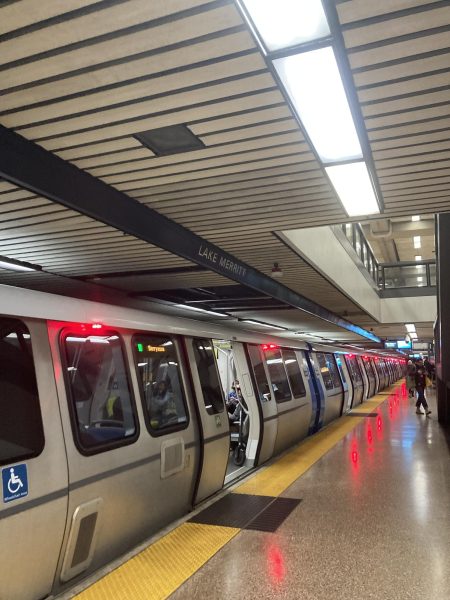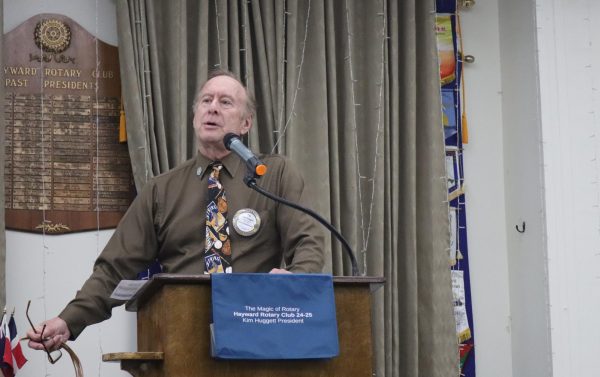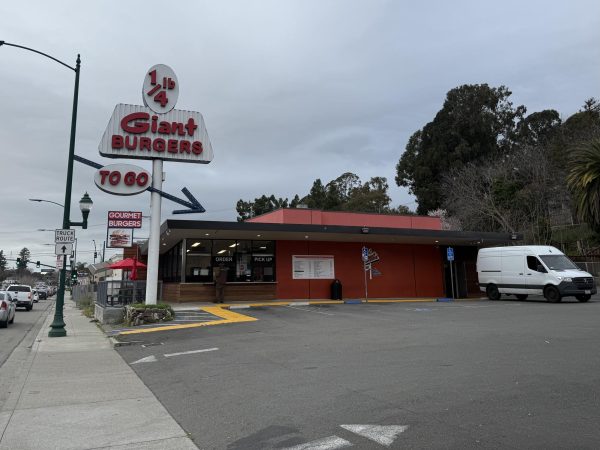Living on Top of the Active Hayward Fault
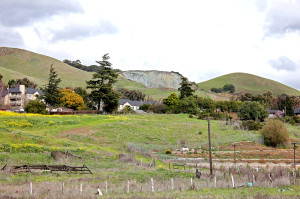
the city, the evidence is the hills shooting up out of
the landscape in a fractured way.
As the sixth largest city in the San Francisco Bay Area, with a population sitting around 145,000, Hayward is home to one of the most dangerous fault lines in Northern California.
About 0.6 miles west of campus, the Hayward Fault runs for about 70 miles southeast to northwest, parallel to the San Andreas Fault. CSU East Bay’s main campus sits on the hills right above the fault line.
Around 10 miles from campus, an earthquake was reported in Fremont on Feb. 24 at 1:55 a.m. at a magnitude of 3.0, according to the U.S. Geological Survey.
“Ideally, you would want to be a kilometer away from the fault if it were to erupt because anywhere within the zone will get shaken severely,” said Geology Professor Luther Strayer, who has been teaching at CSUEB for 13 years. “During an earthquake, houses can collapse, buildings can collapse – there will be some time to recover.”
The Hayward Fault runs through many densely populated cities such as Oakland, Richmond, and San Leandro.
“Depending on the range of construction styles and materials and [age] of construction suggest that some of these cities can have everything from surviving buildings to complete collapses,” said Strayer.
As such, Strayer thinks it is absolutely crucial to prepare for the possibility of a major eruption along the fault.
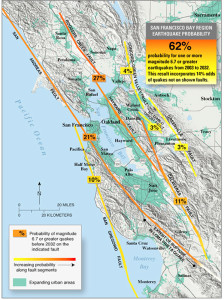 “Assuming society doesn’t riot or freak out for the first few days after an earthquake, people might mostly be on their own,” said Strayer. “There is a chance that our water system could fail, potential for waiting in line for water… People should spend a little time earthquake proofing their houses or if they rent they should do what they can to make themselves safe.”
“Assuming society doesn’t riot or freak out for the first few days after an earthquake, people might mostly be on their own,” said Strayer. “There is a chance that our water system could fail, potential for waiting in line for water… People should spend a little time earthquake proofing their houses or if they rent they should do what they can to make themselves safe.”
Hayward Fault was set off on Oct. 21, 1868. On average, the Hayward Fault has a characteristic earthquake, at about a 6.8 magnitude, every 140 years.
A high-magnitude earthquake was last expected in 2008, which means that it is now almost five years overdue.
Although the idea of a serious earthquake erupting is scary, the CSU Seismic Review Board’s job is to guarantee that all CSU buildings meet their building codes and requirements for “reducing the unacceptable seismic hazard of existing buildings and managing current construction programs to limit future seismic risk to acceptable levels.”
Member of the CSU Seismic Review Board, Richard Niewiarowski, believes that living in a high seismic zone leaves no excuse for not having knowledge of being in close proximity to the fault.
“When an earthquake occurs, a whole variety of ‘seismic hazards’ could result; ground settlement/consolidation, landslides, liquefaction and/or lateral spreading, tsunami, and ground shaking. At CSUEB, most of those simply won’t occur — the soil/rock conditions (and elevation) pose a very low likelihood of any of them from happening – except for ground shaking,” said Niewiarowski, in a recent interview. “Some buildings, especially older ones, may experience some structural and nonstructural damage, however, it is important to know that the building codes are intended primarily to minimize the risk to life safety, not so much to minimize damage to the buildings.”
Warren Hall, one of the most well known buildings on campus, will be completely torn down this year for not being “earthquake friendly” and is going to be replaced.
“Once Warren Hall is removed there are no other buildings at CSUEB that pose serious risks to occupants,” said Niewiarowski.
Erik Fallis, spokesperson for the CSU Chancellor’s Office on behalf of the CSU Seismic Review Board, feels phrases like “safe” and “unsafe” tend to over-simplify and do not reveal the real meaning behind the responsibility they have in making sure CSU buildings are doing what they are meant to do.
“Seismic risk is a basic reality in California,” says Fallis. “What we strive for at the university is application of the best knowledge available in situating and designing buildings that will protect occupants and serve the campus community for decades.”
In the case of Warren Hall, a decision had to be made on how to best handle the situation in terms of safety and cost-efficiency.
“The CSU works to make sure university buildings are able to continue their various functions after a major earthquake,”said Fallis. In the case of a high-rise like Warren Hall, several studies were conducted to assess the design as well as renovation or replacement options and ultimately the best and most cost-efficient solution for the campus community was to demolish the building.”
Demolition of Warren Hall might be a sign that people need to really start preparing themselves for the worst if the long-awaited eruption of the Hayward Fault occurs sooner rather than later.


